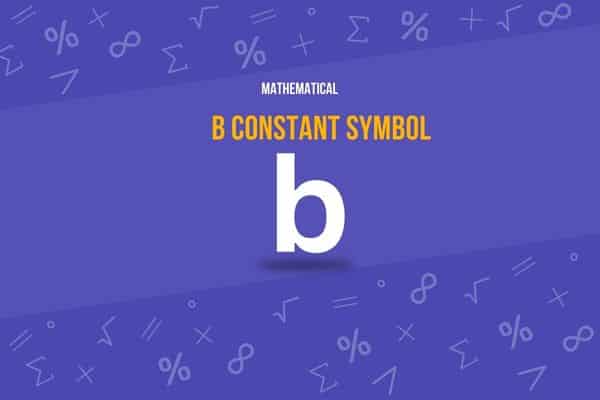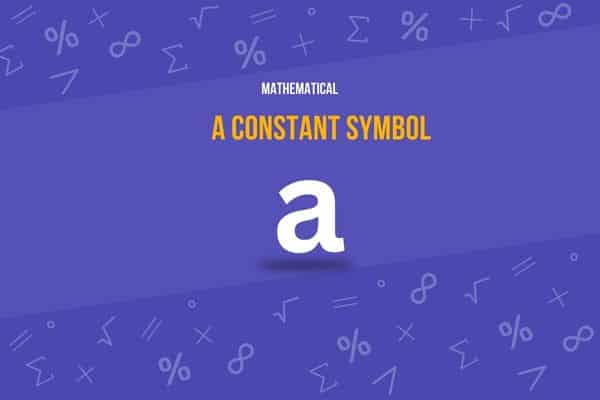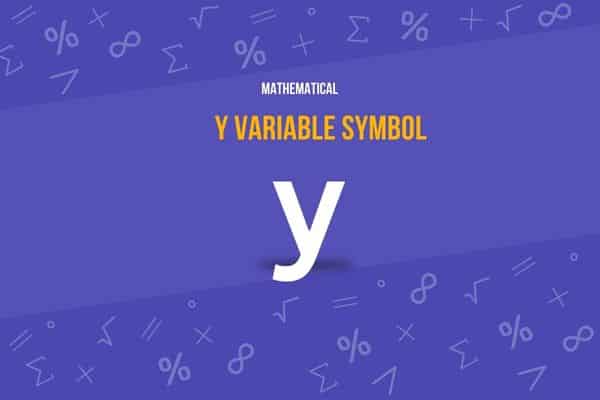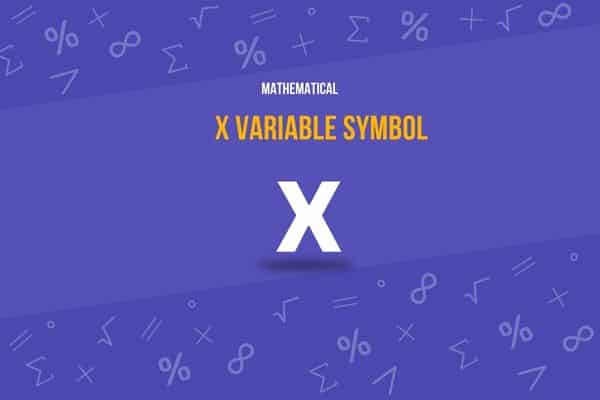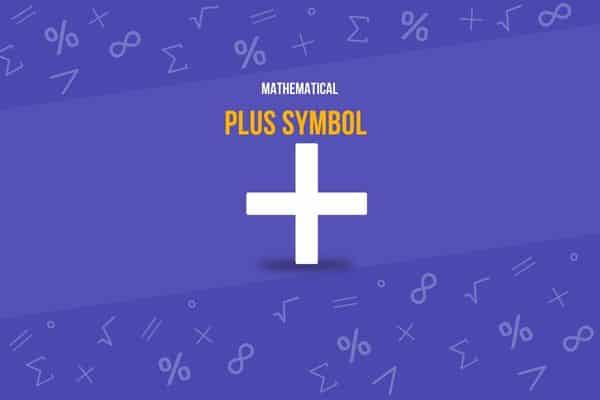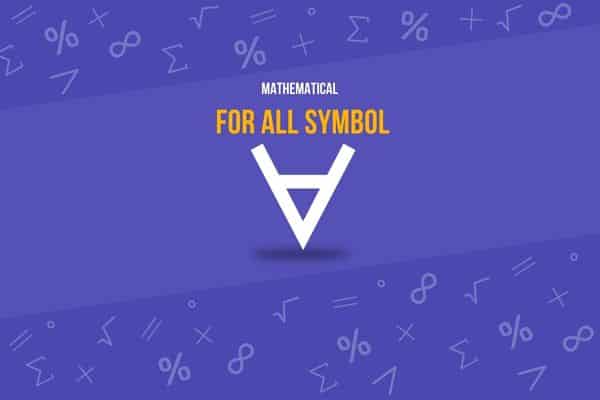What is the Approximately Equal To Symbol?
You’ve probably encountered the fascinating Approximately Equal To Symbol “≈” while scrolling through equations, haven’t you? This charming character, approximately equal to the symbol, plays an essential role in many mathematical expressions. It might seem like a minor player, but oh, the impact it has!
So, prepare to navigate the captivating world of this crucial mathematical symbol.
Let’s unlock its secrets together and demystify the intriguing stories it holds within. Here’s your golden opportunity to comprehend the “≈” symbol and its importance more profoundly.
Let’s get started!
Fast Facts
≈
Approximately Equal To Symbol
Approximately Equal To” symbol (≈) Overview
Here’s a table summarizing the key details about the Approximately Equal To symbol (≈):
| Attribute | Details |
|---|---|
| Symbol Name | Approximately Equal To |
| Unicode | U+2248 |
| Image | ≈ |
| Brief Description | Used to indicate that two values are nearly, but not exactly, equivalent. |
| Unicode Version and Date | Unicode 1.1.0, released in June 1993 |
| Unicode Block Name | Mathematical Operators |
| Plane | Basic Multilingual Plane (BMP) |
| Script | Common |
| Category | Symbol, Math |
| Bidirectional Class | Other Neutral (ON) |
| Combining Class | 0 |
| Character is Mirrored | No |
| HTML Entity | ≈ or ≈ |
| CSS | \2248 |
| UTF-8 Encoding | E2 89 88 |
| UTF-16 Encoding | 2248 |
| UTF-32 Encoding | 00002248 |
Here’s What You Will Find

Approximately Equal To Symbol
The Approximately Equal To symbol, denoted as “≈, “is a widely used mathematical symbol that signifies the near equivalence or similarity of two numerical values or mathematical expressions. It suggests that the numbers or quantities on either side of the symbol are not precisely the same but are close enough in value to be considered practically equivalent for certain purposes or within a specified tolerance.
This symbol is especially prevalent in fields where precise values may not be available, necessary, or practical. It bridges the world of perfect mathematical precision and the realities of approximation often needed in the physical world.
Other Names
The “≈” symbol is commonly referred to as the approximately equal to symbol, but it is also known by several other names, reflecting its multifaceted usage in different contexts. You may hear it referred to as the “almost equal to” symbol, as it denotes a nearness in value without being strictly equal. It’s also occasionally called the “equivalent to” symbol, highlighting the practical interchangeability of the values it connects.
In computer programming and certain mathematical circles, the “asymptotically equal to” symbol denoting values become increasingly close as they approach a certain point. Despite these different names, the symbol consistently embodies the idea of approximate equality.
Approximately Equal To Symbol Meaning
The approximately equal to symbol (≈) is a mathematical symbol expressing approximate equality between two values or quantities. When you see it between two numbers, it means those numbers are close to each other in value but not exactly the same.
The approximately equal to symbol (≈) is a fundamental tool in mathematics, science, and engineering, denoting an estimated equality between two values or expressions. When you encounter this symbol between two quantities, it signifies that they are not precisely equal but close enough for the given context.
For instance, the statement “π ≈ 3.14” means that the value of pi is approximately 3.14, even though pi is an irrational number with non-repeating digits extending indefinitely.
The ≈ symbol finds wide-ranging applications beyond numerical approximations. It’s employed in comparing functions, equations, or even physical measurements where absolute precision is impossible or unnecessary. For example, in physics, one could state the mass of two objects as approximately equal if their difference doesn’t significantly impact the calculations.
Moreover, this symbol isn’t just limited to numbers. It can be used with various mathematical expressions, functions, or physical quantities. For instance, in physics, you might say that the mass of an object is approximately equal to another if its difference is negligible in the context of the calculations you’re doing.
Thus, the ≈ symbol is a powerful tool for simplifying complex mathematical concepts, making them more accessible and easier to work with in practical applications. It embodies the idea that while we strive for precision in mathematics, approximation is often more pragmatic, especially in scientific calculations and engineering designs.
Approximately Equal To Symbol Unicode
Unicode is a universal character encoding standard that provides a unique number, or “code point,” for every character used in written languages, encompassing not only letters and numerals but also special characters, emojis, and various symbols. It was developed to facilitate consistent encoding, representation, and text handling across multiple languages and platforms. This extensive character set is integral to exchanging and understanding information in our digital age.
The Approximately Equal To symbol (“≈”) has its designated place within the Unicode standard. Its Unicode is U+2248, where ‘U+’ indicates that it’s a Unicode character and ‘2248‘ is the hexadecimal number representing this specific character in the Unicode set.
This ensures that if you input the Unicode U+2248, you’ll get the “≈” symbol no matter where or what device you’re using.
Approximately Equal To Symbol Uses
The Approximately Equal To symbol (“≈”) finds utility in numerous fields due to its capability of expressing a close, but not exact, equivalence between two quantities.
In mathematics and physics, it’s frequently used when exact numbers aren’t needed, such as when dealing with irrational numbers like Pi or the gravitational constant, which are often approximated for simplicity. In engineering, a particular value can fluctuate within certain tolerances without significantly impacting a system’s operation.
The “Approximately Equal To” symbol (≈) is used in various contexts to signify that two values are close but not exactly equal. Here are some common uses:
- Mathematics and Science: This symbol is commonly used in calculations where exact equality is not necessary or an approximation is sufficient due to the limits of measurement precision. For instance, calculating pi (π) in practical scenarios often uses 3.14, stated as ( \pi \approx 3.14 ).
- Engineering: This symbol is crucial when exact measurements are not possible or practical. Engineers might use it to indicate that a dimension or value falls within an acceptable tolerance range.
- Statistics and Data Analysis: It’s used to denote estimated values. For example, a statistician might report that the average height of a population is approximately 170 cm, written as ( \text{height} \approx 170 \text{ cm} ).
- Economics: Economists use it when exact values are not necessary for models or when discussing economic indicators subject to change or rounding.
- Education: Teachers use this symbol to introduce students to concepts of estimation and rounding, helping them understand that some mathematical scenarios do not require exact numbers.
In all these fields, the symbol simplifies expressions and calculations where exactness is either impossible or impractical, facilitating a broader understanding and communication of numerical concepts.
Economists and statisticians use the symbol when discussing estimated values or statistical averages where absolute precision is not crucial. It’s also commonplace in computer programming to denote two values’ approximate equality or similarity.
Additionally, it can be employed in everyday conversation to show rough equivalence, such as when comparing prices, times, or distances. Overall, the “≈” symbol’s ability to convey this “near equality” concept has rendered it indispensable across many domains.
Approximately Equal To Symbol Examples
Let’s take an example from mathematics where the Approximately Equal To symbol is commonly used. The irrational number Pi, which is the ratio of the circumference of any circle to its diameter, is known to many decimal places. Still, for most practical calculations, we approximate it.
The “Approximately Equal To” symbol (≈) is used in various contexts to indicate that two values are close in value but not precisely identical. Here are some examples to illustrate its use:
Mathematical Approximations
- ( \pi \approx 3.14159 ): Pi is often approximated as 3.14159 for practical calculations.
- ( e \approx 2.718 ): The base of the natural logarithm, ( e ), is approximately 2.718.
Physics and Engineering
- ( g \approx 9.8 \text{ m/s}^2 ): The acceleration due to gravity at the Earth’s surface is approximately 9.8 meters per second squared.
- ( \text{Speed of light, } c \approx 3 \times 10^8 \text{ m/s} ): The speed of light in a vacuum is rounded to three hundred million meters per second for simpler calculations.
Economics
- ( \text{GDP growth rate} \approx 3\% ): The Gross Domestic Product growth rate might be estimated at around 3% for a particular year.
Statistics
- ( \text{Average height} \approx 170 \text{ cm} ): The average height in a population might be reported as approximately 170 centimeters.
- ( \text{Unemployment rate} \approx 4.5\% ): This might indicate a rough estimate of the unemployment rate.
Everyday Usage
- If a recipe requires approximately 2.5 cups of flour, it might be written as ( \text{Flour} \approx 2.5 \text{ cups} ).
- In driving directions, if a destination is about 50 miles away, it might be expressed as ( \text{Distance} \approx 50 \text{ miles} ).
These examples show how the approximately equal symbol facilitates communication by allowing for generalizations where exact numbers are unnecessary or unavailable, thus simplifying expressions and calculations across various disciplines.
Why is the Approximately Equal To Symbol Important?
The approximately equal to symbol (≈) holds immense importance in mathematics and science, primarily due to the inherent imprecision in these fields. In the real world, values are seldom exact; they often involve some level of approximation. The ≈ symbol lets us handle these approximations effectively and communicate them.
For instance, when we say that the value of pi (π) is approximately equal to 3.14, we recognize that while 3.14 is not the exact value, it’s close enough for many practical applications. The ≈ symbol bridges the gap between theoretical accuracy and practical necessity, making working with numbers easier and understanding the world around us.
Approximately Equal To Symbol History
The history of the approximately equal to symbol, ≈, is deeply intertwined with the development of mathematics and symbolic logic. Understanding its origin and evolution offers a glimpse into how mathematical notation adapts to the needs of expanding mathematical and scientific concepts.
Origins in Mathematical Notation
The introduction of the approximately equal to symbol can be traced back to the early 20th century, although the concept of approximation existed long before in mathematical computations. The symbol itself, consisting of two parallel wavy lines, is believed to have been first used in its current form by the British mathematician Karl Pearson in 1892 when he published work that required expressing approximate equalities in statistical calculations.
Symbolic Representation and Adoption
Karl Pearson’s use of the symbol was motivated by the need to distinguish between exact and estimated statistical values clearly. His choice of the wavy line was intuitive, suggesting a departure from the rigid, straight line used in the equals sign, which denotes absolute equality. The design conveyed the fluid and dynamic nature of approximation.
The adoption of the symbol across different fields of science and mathematics grew as the 20th century progressed. Its utility in dealing with real-world data, where exact equality is rare, made it indispensable in statistics, physics, and engineering studies.
Standardization and Unicode Inclusion
As mathematical notation became standardized with digital typesetting and computing, the approximately equal to symbol was included in the Unicode Standard to ensure consistency across different platforms and systems. It was assigned the code U+2248 in Unicode, facilitating its use in digital documents and software.
Expansion in Usage
Beyond its traditional uses in mathematics and science, the symbol found a place in computer programming, where it is used to compare floating point numbers—an essential operation given the inherent inaccuracies in representing real numbers in computing environments. Additionally, its concept has been extended metaphorically in non-scientific contexts, such as in discussions of social or economic issues where precision is elusive but approximations are informative.
Cultural and Educational Impact
The symbol’s educational impact is significant, as it helps students and scholars understand and communicate the limitations and approximations inherent in scientific measurements and calculations. It serves as a constant reminder of the practical limitations of theoretical models and the empirical data derived from experiments.
The history of the approximately equal to symbol (≈) is a testament to the evolution of mathematical notation in response to the practical demands of science and technology. Its development from a simple notation in a statistician’s toolkit to a fundamental element in the lexicon of modern science underscores the dynamic interplay between mathematical expression and scientific advancement.
Approximately Equal To Symbol Origin
The origin of the approximately equal to symbol (≈) can be traced back to the late 19th and early 20th centuries, a period marked by significant advancements in mathematical and statistical methodologies. The symbol’s creation is often attributed to the innovative work of British mathematician Karl Pearson, who played a pivotal role in its development and initial usage.
Karl Pearson and Statistical Analysis
Karl Pearson, a key figure in the foundation of modern statistics, sought a way to express the concept of approximation effectively in his statistical work. In his efforts to analyze and present data that did not fit into precise mathematical equations, Pearson needed a notation that could communicate the idea of near-equality—a concept crucial for statistical analysis and theory building.
Design and Symbolic Choice
The design of the symbol—two tilde-like, wavy lines parallel to each other—was chosen by Pearson to visually represent the notion of approximation. The wavy lines suggest a deviation from the strict linearity of the equal sign (=), which denotes exact equality. This design choice intuitively communicates the flexibility and fluidity inherent in approximate values.
Early Usage and Publications
Pearson first used the symbol in his writings in the late 19th century. One of the earliest documented uses appears in his work on regression analysis, where he emphasized the distinction between theoretical predictions and empirical observations. By introducing this symbol, Pearson could clearly differentiate between equal and approximately equal values, which was crucial for interpreting statistical results.
Widespread Adoption
After Pearson introduces the symbol, its use gradually spread beyond his works. Other statisticians and mathematicians began adopting the ≈ symbol as they recognized its utility in conveying the practical realities of dealing with empirical data, where measurements and calculations often involve some degree of approximation.
Influence on Mathematical Notation
The adoption of the approximately equal to symbol marked a significant evolution in mathematical notation. It reflected a growing recognition within the scientific community of the need for symbols that could express complex mathematical relationships more precisely. The symbol’s acceptance into mathematical language was part of a broader movement towards refining and expanding mathematical notation to accommodate the increasingly sophisticated techniques used in various sciences.
The approximately equal to symbol (≈) originates from the practical challenges early statisticians and mathematicians faced in representing approximate values. Karl Pearson’s design and adoption of it represent a critical moment in the history of mathematical notation, highlighting the evolving needs of the scientific community to communicate concepts more effectively and accurately.
Evolution of the Approximately Equal To Symbol
The approximately equal to symbol (≈) has seen quite a journey over the centuries. Its earliest forms were present in the work of mathematicians such as Gauss, but it wasn’t until Arthur Cayley’s time that the symbol took on its modern standardized form. Over time, its use expanded beyond pure mathematics into applied fields like physics, engineering, and computer science. The symbol’s interpretation has also become more nuanced.
While it initially represented an approximate but imprecise equivalence, it’s often used to indicate a level of approximation suitable for a given context or problem. Therefore, the ≈ symbol has evolved in its visual form and prevalence, as well as the depth and breadth of its meaning in various scientific disciplines.
Approximately Equal To Symbol In Everyday Life
The approximately equal to symbol (≈) carries a profound philosophical significance that can be applied to everyday life. This humble symbol reminds us of the world’s inherent imprecision, suggesting that perfection is not always the goal and that ‘good enough’ can often be more than adequate. In a world fixated on absolutes, it gently nudges us to appreciate the beauty of approximation and imperfection.
Translating this concept into our daily routines encourages us to be more forgiving in our pursuit of perfection. Striving for exactness in everything can be exhausting, and it’s often more productive to aim for progress, not perfection. For example, instead of insisting on completing a task flawlessly on the first attempt, we can take an iterative approach, improving each time.
Similarly, when evaluating our progress and comparing ourselves to others, the principles of the ≈ symbol teach us to appreciate ‘approximate equality.’ We don’t have to be exactly like someone else to be successful or happy; we just need to be close enough based on our standards.
The approximately equal to symbol (≈) offers a comforting philosophy. It’s a call to embrace the imperfect, the ‘good enough’, and to appreciate the beauty of being ‘approximately equal’ in our beautifully complex world.
Last Thoughts
As we wrap up our exploration of the Approximately Equal To symbol (“≈”), we hope you’ve gained a newfound appreciation for its significance in mathematics, science, and even our day-to-day lives. This humble symbol embodies the concept of approximation and adaptability, reminding us of the practical need for flexibility in a world that rarely adheres strictly to our expectations.
If you’ve found this exploration intriguing, we encourage you to explore the fascinating stories of other symbols and signs. Each carries a unique history and a profound meaning that can enrich our understanding of the world. If the “≈” symbol resonates with you, why not check out merchandise featuring this symbol?
Wearing or displaying it can be a conversation starter, a personal emblem of adaptability, or simply a celebration of your love for learning. Keep exploring, questioning, and, most importantly, appreciating the hidden magic of symbols in our world.
Before You Go
Don’t stop at the Approximately Equal To symbol; there’s a whole world of intriguing symbols out there waiting to be discovered, each with its unique story and significance, so keep exploring!
If you found this exploration of the “Approximately Equal To” symbol fascinating, why not share the knowledge with others? Whether you’re a math enthusiast, a student, or simply curious about the symbols we encounter in everyday life, this information might spark interesting discussions among your friends, colleagues, or fellow students.
Share this post on social media, in academic forums, or even in your classroom discussions to spread appreciation for how such a simple symbol can carry profound meanings and practical applications.
Sharing this could enlighten others and deepen your understanding as you engage with different perspectives. Let’s keep the conversation going!

